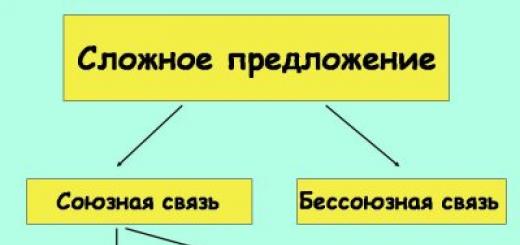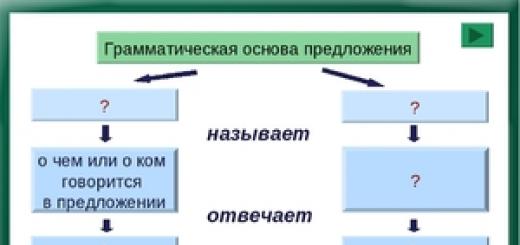History test Eastern Slavs in the VI-IX centuries. Education of the Old Russian State Grade 10 with answers. The test consists of 2 options, each option has 6 tasks.
1 option
A1. Geographical names: Constantinople, Dnieper, Lovat, Lake Ilmenskoe, Baltic Sea - associated with:
1) the division of the Slavs into three branches
2) trade route "from the Varangians to the Greeks"
3) archaeological sites
4) the formation of tribal unions of the Eastern Slavs
A2. The consequence of the emergence of a neighboring community among the Eastern Slavs was the appearance of:
1) Varangians
2) beekeeping
3) writing
4) social inequality
A3. A detour by the prince and a squad of lands to collect tribute in the Old Russian state was called:
1) dragging
2) crowd
3) undercut
4) beekeeping
A4.
1) development of the economy
2) the emergence of written legislation
3) transfer of the capital from Novgorod to Kyiv
4) the presence of large uninhabited territories
A5. Previously, other princes from the Rurik dynasty ruled:
1) cue
2) Askold
3) Igor
4) Svyatoslav
IN 1.
The brothers, named Rurik, Sineus and Truvor, famous either by birth or deeds, agreed to take power over people who, knowing how to fight for liberty, did not know how to use it.
Option 2
A1. The main agricultural tool of labor among the Slavs in the VI-IX centuries. was:
1) board
2) plow
3) drag
4) digging stick
A2. The reason for the emergence of a neighboring community among the Eastern Slavs was:
1) the development of tools
2) the emergence of the state
3) the emergence of writing
4) calling the Varangians to Russia
A3. Roman historians of the 1st c. n. e. Slavs were called
1) Varangians
2) Wends
3) Great Russians
4) Indo-Europeans
A4. The reason for the formation of the Old Russian state:
1) adoption of Christianity
2) the existence of a tribal community
3) the emergence of social inequality
4) cessation of the fight against external enemies
A5. The founder of the dynasty of Kievan princes was:
1) cue
2) Rurik
3) Oleg
4) Svyatoslav
IN 1. In what year did the event referred to in the passage from the document take place?
Having killed Askold and Dir, Oleg established himself in Kyiv, made it his capital city; according to the chronicler, Oleg said that Kyiv should be "the mother of Russian cities."
Answers to the test on the history of the Eastern Slavs in the VI-IX centuries. Education of the Old Russian State Grade 10
1 option
A1-2
A2-4
A3-2
A4-1
A5-3
IN 1. 862
Option 2
A1-2
A2-1
A3-2
A4-3
A5-2
IN 1. 882
History has preserved several names of the ancestors of the East Slavic tribes, including
Varangians, Vikings, Normans - these are all names
In which of the chronicles in the first lines the question is posed: “Where did the Russian Land come from, who in Kyiv began to reign first and where did the Russian land come from?”
What modern peoples were based on the ancient Russian nationality?
A5. In the pre-state period, the Eastern Slavs developed two centers in
1) Novgorod and Dnieper
2) Volga and Baltic
3) Baltic and Black Sea
4) The Volga region and the Don
A6. Neighbors of the Eastern Slavs
1) Germans
2) galls
3) Romans
4) Khazars
A7 . The transition from a tribal community to a neighboring one among the Eastern Slavs occurred as a result of
1) formation of unions of tribes
2) development of arable farming
3) the emergence of feudal estates
4) the need to defend against nomads
A8 . The occupation of breeding bees and obtaining honey among the Slavs was called
1) beekeeping
2) architecture
3) cooperage
4) pottery
A9. The main trading partner of the Old Russian state was
1) Byzantium
2) Sweden
3) Tmutarakan
4) Scythia
B1 Arrange in the correct sequence from north to south the rivers and lakes that were part of the trade route "from the Varangians to the Greeks."
A) Lake Ladoga
B) Dnieper
B) catch
D) Ilmen
B2. Establish a correspondence between the name of the tribal union of the Slavs and the place of their settlement. Enter your answer in the table:
TRIBE | PLACE OF SETTLEMENT | ||
northerners | Upper reaches of the Western Dvina, Dnieper and Volga |
||
Vyatichi | Lands between Pripyat and Western Dvina |
||
Dregovichi | Lands along the Oka, Klyazma, Sister, Moscow, Upper Volga |
||
krivichi | Lands along Sula, Semi, Desna |
||
Lands along the Western Bug and in the spurs of the Carpathians |
Part C
1. (С4)
Name at least three provisions characterizing the occupations of the Eastern Slavs, and give at least three names of the tools that they used.
2. (С4)
Name at least three positions that characterize the beliefs of the Eastern Slavs, and give at least three names of the deities they worshipped.
3. (С4)
Name at least three provisions that characterize the social structure of the Eastern Slavs in the 6th-8th centuries, and indicate at least three main prerequisites for the formation of the state among the Eastern Slavs.
No. 5. (C5)
Below are two points of view on the origin of the Old Russian state:
- The Old Russian state arose as a result of the formation of internal prerequisites: the development of society, social and economic changes.
- Statehood was brought to Russia from outside, by the Normans. Which of the above points of view do you prefer?
more preferable and persuasive. Give at least three facts, provisions that can serve as arguments confirming your chosen point of view.
No. 6. (C5)
Below are two points of view on the formation of the state among the Slavs:
- The Varangians brought statehood to the Slavic lands.
- The Varangians had little influence on the formation of the state among the Slavs.
Indicate which of the above points of view seems to you more preferable and convincing. Give at least three facts, provisions that can serve as arguments confirming your chosen point of view.
A8. Set the correspondence between the elements of the left and right columns.
A5. The rope is
A7. In case of military danger, they fought with enemies
Similar material:
- Plan of Eastern Slavs in VI viii , 103.1kb.
- 2. Eastern Slavs. 4 versions belonging to the Eastern Slavs, 1849.37kb.
- Theme I: Eastern Slavs. The formation of Russian statehood, 33.3kb.
- Theme Eastern Slavs in the second half of the first millennium, 61.73kb.
- Eastern Slavs in antiquity, 321.82kb.
- Eastern Slavs and their neighbors in 6-9, 1048.19kb.
- Kievan Rus, 1956.5kb.
- Eastern Slavs are now a Russian, Ukrainian and Belarusian speaking population, 470.71kb.
- Eastern Slavs belong to the Indo-European language family (its main groups, 511.53kb.
- Factors affecting the development of the country. East Slavs. Origin, beliefs, , 511.21kb.
Option 1
A1. What was the territory of the settlement of the Eastern Slavs?
1) East Asia 2) Western Europe 3) East European Plain 4) Baltic
A2. What occupation are the words “cutting”, “plough” associated with; and "harrow"?
A3. What explained the distribution of the shifting system of agriculture among the Eastern Slavs in the Dnieper region?
1) soil fertility 2) forested land 3) use of a plow 4) marshland
A4. An excerpt from the work of a Byzantine historian: “These tribes, Slavs and Antes, are not ruled by one person, but since ancient times they have lived in democracy (democracy), and therefore they consider happiness and misfortune in life to be a common thing” - indicates that the Eastern Slavs in the 6th century:
1) feudal relations were established 2) the tribal system was preserved
3) a state was formed 4) there was no division of labor between men and women
A5. Verve is:
Test 1. Eastern Slavs
Option 2
A1. When did the Slavs settle in Eastern Europe?
1) 40 thousand years ago 2) in the 7th-6th centuries. BC e. 3) in the VI-VIII centuries. 4) in the tenth century.
A2. What occupation are the words "fallow", "zhito" and "ploughshare" associated with?
1) with fishing 2) with beekeeping 3) with cattle breeding 4) with agriculture
A3. What explained the spread of the slash-and-burn system of agriculture among the Eastern Slavs?
1) soil fertility 2) forest cover of the region 3) lack of forest 4) use of a plow
A4. An excerpt from the work of a Byzantine historian: “They believe that only God, the creator of lightning, is the master of all, and bulls are sacrificed to him and other sacred rites are performed. They revere rivers, and nymphs, and all sorts of other deities, make sacrifices to all of them, and with the help of these victims, they also make fortune-telling "- testifies that among the Eastern Slavs:
1) Christianity was established 2) fishing and navigation were the main occupations
3) pagan beliefs were widespread 4) there were no contacts with other countries
A5. Verve is:
1) the custom of blood feud 2) territorial (neighboring) community among the Eastern Slavs
3) a place of worship for pagan gods.
A6. The most important cases among the Slavs were decided by:
1) Tribal lords 2) magicians 3) general council-veche
A7. In case of military danger, they fought with enemies:
1) units of hired soldiers from neighboring countries
2) the people's militia of the Eastern Slavs
3) well-trained detachments of professional Slavic warriors.
A8. Set the correspondence between the elements of the left and right columns.
Lashmanskaya basic comprehensive school named after
Academician V.A.Kanaikin
Test 3. Eastern Slavs and their neighbors.
6th grade
A history teacher
Alkin D.N.

1. Arrange the following events in chronological order.
1) settlement by Eastern Slavs of the East European Plain
2) the allocation of the Balto-Slavic tribes from the group of Indo-European tribes
3) the division of the Balto-Slavic tribes into Balts and Slavs
4) the division of the Slavic tribes into three branches

2. Establish a correspondence between the Slavic peoples and the groups of Slavs to which they belong.
PEOPLES
A) Poles
B) Serbs
B) Russians
D) Croats
D) Ukrainians
E) Slovaks
GROUPS OF SLAVES
1) Eastern Slavs
2) Western Slavs
3) southern Slavs

3. Distribute the occupations of the Eastern Slavs and the results of labor that relate to them.
LESSONS
A) farming
B) cattle breeding
B) hunting
D) beekeeping
RESULTS OF WORK
1) honey of wild bees
2) wheat, rye, millet
3) meat of pigs, cows
4) fur skins

4. Read an extract from a historical document and answer the questions.
“Entering the battle, most of them go to the enemy with shields and darts in their hands, but they never wear shells; others do not wear shirts (chitons) or cloaks, but only trousers, pulled up by a wide belt on the hips, and in this form they go to battle with enemies ... They are very tall and of great strength.
1) What people are mentioned in the text?
2) What weapon is mentioned in the passage?

5. The list lists the gods of the Eastern Slavs. Find TWO extra names.
1) Stribog
2) Zeus
3) Yarilo
4) One
5) Perun
6) Mokosh

6. Write down the term in question.
The popular assembly among the Slavs, which decided the most important issues, is

7. The city that became the center of the Ilmen Slovenes, a tribe of Eastern Slavs, is
1) Kyiv
2) Smolensk
3) Novgorod
4) Chernihiv

8. The list contains the tribes of the Eastern Slavs. Find TWO extra names.
- clearing
- Khazars
3) Volhynia
4) radimichi
5) votyaki
6) krivichi

9. Match the term with its meaning.
TERM
A) rope
B) colonization
B) people's militia
D) paganism
MEANING
1) an army consisting of representatives of the community
2) a community among the ancient Slavs
3) economic development of land
4) belief in many gods

10. Mark the rivers along which the tribes of the Eastern Slavs settled
1) Vistula, Oder
2) Dniester, Dnipro
3) Vyatka, White
4) Sava, Morava

11. Establish a correspondence between the Slavic peoples and the groups of Slavs to which they belong.
PEOPLES
A) Russians
B) Czechs
B) Slovaks
D) Belarusians
D) Bulgarians
E) Serbs
GROUPS OF SLAVES
1) Eastern Slavs
2) Western Slavs
3) southern Slavs

12. Establish a correspondence between the farming system and its characteristics.
X CHARACTERISTICS
A) prevalence mainly in the forest belt
B) prevalence in the steppe zone
C) use the soil until exhaustion, then,
after 20-30 years, reuse
D) cutting down trees, burning stumps
FARMING SYSTEMS
1) slash and fire
2) shifting

13. Read an extract from a historical document and answer the questions.
“They believe that only God, the creator of lightning, is the master of all, and bulls are sacrificed to him and other sacred rites are performed. They worship rivers, and nymphs, and all sorts of other deities, make sacrifices to all of them, and with the help of these sacrifices, they also perform divination.
2) What occupation of the Eastern Slavs does the described ritual of sacrifice speak of?
3) What mythological creatures are mentioned in the text?

14. Establish a correspondence between the names of the Slavic gods and their functions.
GODS
A) Mokosh
B) Veles
B) Stribog
D) Yarilo
FUNCTIONS
1) god, lord of the wind
2) goddess of fertility
3) patron of cattle breeding
4) sun god

15. The list lists the tribes of the Eastern Slavs. Find TWO extra names.
1) cheremis
2) Dregovichi
3) krivichi
4) Pechenegs
5) vyatichi
East Slavs history test for 6th grade students. The test includes 2 options, each option consists of 2 parts (part A and part B). Part A has 5 questions and Part B has 3 questions.
Each correct answer is 1 point.
7-8 points - excellent
5-6 points - good
3-4 points - satisfactory
less than 3 points - unsatisfactory
1 option
A1. What tribes invaded the Northern Black Sea region in the 4th c. led to the destruction of the Greek and Scythian states in this region?
1) Huns
2) avar
3) Khazar
4) Bulgar
A2. Which of the listed agricultural cultures was familiar to the Eastern Slavs in antiquity?
1) tomato
2) millet
3) corn
4) potatoes
A3. The skins of what fur-bearing animal did the Eastern Slavs mainly use as money, for exchange?
1) beaver
2) mink
3) foxes
4) martens
A4. Which of the following was characteristic of the social life and economic activity of the Eastern Slavs in the 7th-8th centuries?
1) big role of joint driven hunting
2) massive use of slave labor on earth
3) the predominant role of craft and trade
4) joint ownership of hayfields and forest lands
A5. The most culturally, politically and economically developed state with which the Eastern Slavs contacted in the 8th-9th centuries was
1) Sweden
2) Byzantium
3) Poland
4) Hungary
B1.
A farming system in which depleted lands in the steppe and forest-steppe regions were not plowed up for 20-30 years, until they restored fertility, and the farmers moved to other plots of land.
B2. The following are terms related to the management system and social structure of the Eastern Slavs in the 7th-8th centuries. Find and write down the serial number under which the term is indicated that is not related to the management system and public life of the Eastern Slavs in the 7th-8th centuries.
1) veche;
2) rope;
3) elder;
4) tribe;
5) policy.
B3. What pagan deities belonged to the pantheon of East Slavic tribes? Find two names in the list below and write down the numbers under which they are indicated.
1) Mokosh
2) Demeter
3) Thor
4) Veles
5) Ares
Option 2
A1. What was the name of the capital of the Khazar Khaganate?
1) Itil
2) Olvia
3) Panticapaeum
4) Bulgar
A2. What was the name of the neighboring community among the Eastern Slavs?
1) brand
2) posad
3) rope
4) polyudie
A3. What type of management was the main one for the Eastern Slavs in the 7th-8th centuries?
1) craft
2) cattle breeding
3) farming
4) hunting
A4. Which of the following was characteristic of the beliefs and religious cult of the Eastern Slavs in the 7th-8th centuries?
1) the construction of large stone temples-sanctuaries to the gods
2) belief in one god
3) mass sacrifices on religious holidays
4) worship of wooden images of gods - idols
A5. Bortnichestvo is a type of economic activity associated with
1) hunting for a fur-bearing animal
2) fishing
3) collecting honey
4) cattle breeding
B1. Write down the word (term) you are talking about.
The people's assembly among the Eastern Slavs, at which elders were elected to conduct common affairs and the most important issues were resolved.
B2. The names of East Slavic deities, spirits, evil spirits, etc. are listed below. Find and write down the serial number under which the name is indicated, which is not related to the beliefs of the Eastern Slavs.
1) mermaid;
2) goblin;
3) water;
4) genie;
5) brownie.
B3. Which of the following names refer to the East Slavic tribes? Find two names in the list below and write down the numbers under which they are indicated.
1) Sarmatians
2) Dregovichi
3) cheremis
4) Polotsk
5) Bulgars
Answers to the test on the history of the Eastern Slavs
1 option
A1-1
A2-2
A3-4
A4-5
A5-2
B1-folding
B2-5
B3-14
Option 2
A1-1
A2-3
A3-3
A4-4
A5-3
B1-veche
B2-4
B3-24










